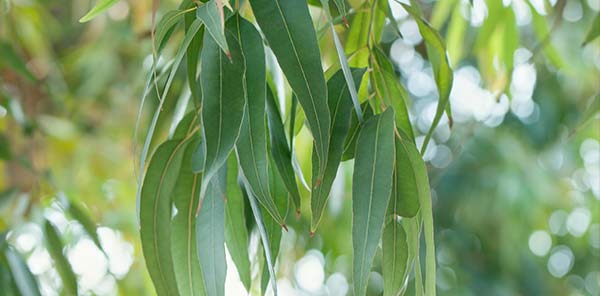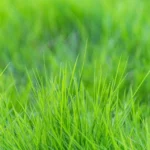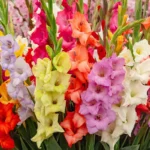
Eucalyptus is a diverse genus of flowering trees and shrubs.
Eucalyptus is also known as “gum tree” because of the sticky rubbery substance that flows from the injured bark.
There are more than 700 species of eucalyptus.
All parts of eucalyptus tree are used in the manufacture of dyes.
Most species are native to Australia, with a very small number of native species found in parts of adjacent New Guinea and Indonesia and one as far away as the Philippines.
Eucalyptus has white, yellow, pink or red flowers. Beautiful color of the flowers is result of huge number of stamens (male reproductive organs). They do not have petals.
Nearly all eucalyptus are evergreen, but some tropical species lose their leaves at the end of the dry
season.
Insects, birds and small mammals (such as bats) pollinate eucalyptus flowers. They are attracted by delicious nectar that is produced in big quantity.
A mature eucalyptus range form of a low shrub to a very large tree.
Tree can be divided into four size categories:
• Small: to 10 meters (33 feet) in height
• Medium-sized: 10–30 meters (33–98 feet)
• Tall: 30–60 meters (98–197 feet)
• Very tall: over 60 meters (200 feet)
Eucalyptus regnans, the Australian ‘mountain ash‘, is the tallest of all flowering plants ; today, the tallest measured specimen named Centurion is 99.6 meters (327 feet) tall.
Eucalyptus tree has unique strategy to survive fires that are usual for the Australian forests. Deep inside the tree and inside the roots, eucalyptus has dormant shoots. They will germinate only under the influence of hormones that are triggered by heat (of the fire).
Six other eucalypt species exceed 80 meters in height.
The appearance of eucalyptus bark varies with the age of the plant, the manner of bark shed, the
length of the bark fibres, the degree of furrowing, the thickness, the hardness, and the colour. All
mature eucalypts put on an annual layer of bark, which contributes to the increasing diameter of the
stems.
Some insects lay eggs and feed on the bark of eucalyptus tree. They leave specific marks on the bark that look like man-made scribbles.
The leaves on a mature eucalyptus plant are commonly lanceolate, petiolate, apparently alternate and
waxy or glossy green. In all except a few species, the leaves form in pairs on opposite sides of a
square stem, consecutive pairs being at right angles to each other.
Most species of eucalyptus shed their bark once per year. Bark can be removed in long ribbons, spongy pieces, furrowed and rough pieces or small flakes.
The most readily recognisable characteristics of eucalyptus species are the distinctive flowers and fruit.
Flowers have numerous fluffy stamens which may be white, cream, yellow, pink, or red; in bud,
the stamens are enclosed in a cap known as an operculum which is composed of the fused sepals or
petals, or both. Thus, flowers have no petals, but instead decorate themselves with the many showy
stamens. As the stamens expand, the operculum is forced off, splitting away from the cup-like base of
the flower; this is one of the features that unites the genus.
Bark of eucalyptus tree is usually brown in color. Rainbow eucalyptus sheds its bark several times per year and reveals inner bark that is multicolored.
The name Eucalyptus, from the Greek words eu-, well, and kaluptos, cover, meaning “well-covered”, describes the operculum. The woody fruits or capsules are roughly cone-shaped and have valves at the end which open to release the seeds, which are waxy, rod-shaped, about 1 mm in length, and yellow-brown in color.
Koala’s diet is completely based on the leaves of eucalyptus. Despite wide variety of available species of eucalyptus, only few of them are on the koala’s menu.
Australia is covered by 92,000,000 hectares (227,336,951 acres) of eucalypt forest, comprising three quarters of the area covered by native forest.
Eucalyptus oil is also used as insecticide.
Many species, though by no means all, are known as gum trees because they exude copious kino from any break in the bark.
Eucalyptus deglupta, commonly known as the rainbow eucalyptus is a tall and most beautiful tree. The unique multi-hued bark is the most distinctive feature of the tree. Patches of outer bark are shed annually at different times, showing a bright green inner bark. This then darkens and matures to give blue, purple, orange and then maroon tones.
Leaves of eucalyptus are rich in oil that is used to alleviate symptoms of bronchitis, sore throat, nasal congestion, etc.
Eucalypts have been planted in some places around the world to dry up swamps, which happens because of their great consumption of water.
On warm days, eucalyptus forests are sometimes shrouded in a smog-like mist of vaporised volatile
organic compounds; the Australian Blue Mountains take their name from the haze.
Most eucalypts are not tolerant of severe cold. Whilst in a wide range of climates mild frost is
experienced by eucalypts, they in general only tolerate light frosts down to −5 °C (23 °F).
Koalas, Greater Gliders and Ringtail Possums, are only mammals which can survive on a diet of
eucalyptus leaves. Eucalyptus leaves are very fibrous and low in nutrition, and to most animals are
extremely poisonous.
Leaves of eucalyptus have lanceolate shape. They are positioned downwards to prevent direct exposure to the sunlight (and consequent loss of water).
The toxins are thought to be produced by the trees as a protection against leaf-eating animals like insects.
Eucalyptus flowers produce a great abundance of nectar, providing food for many pollinators including insects, birds, bats and possums.
The nectar of some eucalypts produces high-quality monofloral honey.
Eucalyptus oil has a history of wide application, as a pharmaceutical, antiseptic, repellent,
flavouring, fragrance and industrial uses.
An essential oil extracted from eucalyptus leaves contains compounds that are powerful natural
disinfectants and can be toxic in large quantities.
Size of eucalyptus depends on the species. Eucalyptus tree can reach 33 to 200 feet in height.
Eucalyptus leaves and oil have been used for generations as a cure-all for respiratory issues, particularly in removing catarrh from the respiratory tracts.
Lifespan of eucalyptus depends on the species. Most eucalyptus trees can survive more than 250 years in the wild.
Eucalyptus oil is highly flammable (ignited trees have been known to explode); bushfires can travel
easily through the oil-rich air of the tree crowns.
Eucalyptus is the most common short fibre source for pulpwood to make pulp.
Eucalypt wood is also commonly used to make didgeridoos, a traditional Australian Aboriginal wind
instrument.
Eucalyptus was introduced from Australia to the rest of the world following the Cook expedition in 1770.
Today, eucalyptus is commercially grown in tropical and subtropical areas all over the world.
Fruit of eucalyptus is called gum nut.
Eucalypts are being grown on plantations in many countries including the United States, Brazil, Morocco, Portugal, South Africa, Israel, and Spain.
The oldest definitive Eucalyptus fossils are surprisingly from South America, where eucalypts are no longer endemic. The fossils are from the early Eocene (51.9 million years ago), and were found in the Laguna del Hunco deposit in Chubut province in Argentina.









